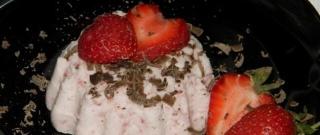At the mere thought of the Orient, the mind usually arises the masterpieces of Sultans era, the sumptuousness of ancient palaces, mosques, and unique taste of Turkish delights, of course. Of all people, Turkish pastry-cooks surpassed the whole world in the art of sweet tastes and aroma composing.
Its history is comprised of many centuries. The exotic delicacies of the far East were undiscovered to Europeans for a long time. Some of these were brought to Europe in the XVII - XVIII centuries and served exclusively as exquisite goodies for the richest landlords.
Much-loved Turkish Sweets and Desserts
Turkey - here’s where a well and truly sweet-life! Expressing the overall richness of best Turkish delights would be a challenge within encyclopedia size. Though, even the top-sweets reflect the general highlight: splendid look favorably endowed with a rich taste and easy-to-cook technology.
Tahini halva
Reminds something like a midway between frequent halva and cotton candy. This Turkish delight recipe is prepared from sugar syrup with citric acid and fried flour. For more deliciousness, add vanilla, pistachio or cashew nuts, and other sophisticated ingredients.
Nougat
A vapory and soft dessert, sufficiently structured. Goes well with nuts, dried berries, candied fruits, crispy choco-balls or popped rice.
Burma baklava
The quintessence of divine sweetness, mellowness, and melodiousness. Incredible dessert made of puff paste, syrup and nuts.
Turkish Kunefe
This ancient delight is made of crispy kadayif dough, soaked in syrup and fraught with melted mozzarella.
Candied fruits
Fruits and berries boiled in sugar syrup. Also include soulful options that include: pumpkin, tomato, fig, orange, and even chestnut.
Ayva tatlisi
Apple-quince classic dessert with sugar and spices characterizes the autumn-winter season. Its multifaceted aroma is just marvelous. Easy preparing like shooting fish in a barrel.
Kataifi
Same to baklava, the popular in Greece kataifi dessert (also called kadayif) was brought the country along with Turkish rule. Thinnest threads made of phyllo dough for any type of baking. For its exceptional appearance, the pastry dough is also called “angel hair” pasta. The combination of delicious crispy dough, sweet stuff of nuts and tasty syrup.
Lokum, as a pacesetting dessert among Turkish sweets recipes
One way or another, the main and ever association with Turkish delights belongs to lokum.
Everyone tried it at least once. Transparent, powdery colored, lightly sprinkled with icing sugar, filled with nuts, honey, cinnamon, mint sometimes. This is a taste-symphony and a portal to childhood or fairy tail for a moment.
Turkish lokum has a very old and mysterious history. It was known in palaces of Turkish rulers already for 230-250 years ago. And since sugar was brought in Turkey only in the 19th century, all sweets before that time had a ropy consistency filled with honey, nuts, dried fruits and dough mixed together.
The origin of lokum recipe, the same as its naming is fanned of legends. The very recipe is cooked according to special technology, with sugar and starch. Honey, nuts, syrups, dried fruits are used as filling and giving it a special taste. Prepared lokum is sprinkled with finely ground, powdered sugar.
Not a surprise that upon visiting Turkey, one British traveler was delighted with the remarkable and unordinary taste of lokum - a truly royal dessert. Some say, that the Englishman liked lokum so much that he bought a huge box full of it and shipped to his homeland. Since then, the lokum is deservedly considered the most bizarre delicacy for tea all over the world.
Benefits of Turkish desserts
Sweet, high-caloric but healthy and useful, as for desserts. Why?
The basis of oriental sweets consists of nuts or seeds, as a rule. Notably, in its natural and whole condition. There are proteins, fats, and plenty of vitamins. Nutrients in nuts have a beneficial effect on the heart functioning, relieves headaches, increases concentration, aids sleep and stimulate high-quality brain function. It also works great when natural honey is preferable instead of sugar syrup. Consequently, even such delicious sweets as baklava and nougat become a rich source of proteins, carbs and a lot of vitamins for the human body.
Also, the positive effect of the vast majority of oriental sweets is the lack of flour in them. When combined with a lot of sugar, the flour causes rapid saturation, without bringing beneficial substances into the body. Thus, eating the Turkish sweets of a high amount of flour and sugar should be in a moderate way.






